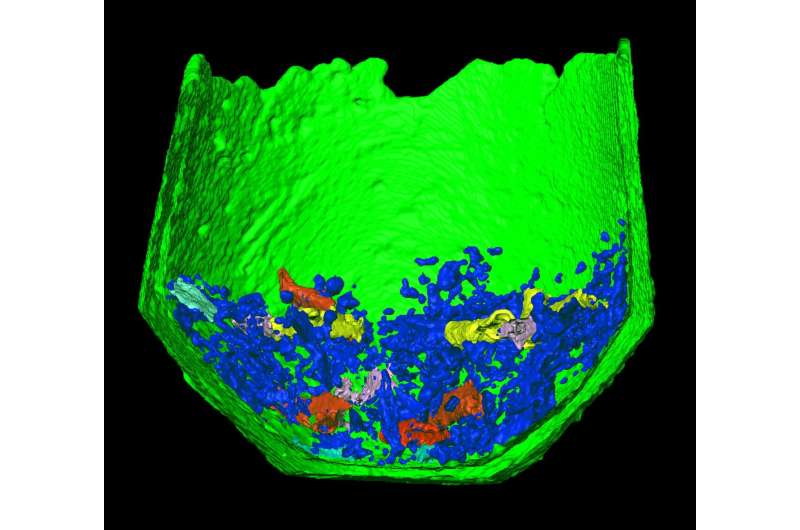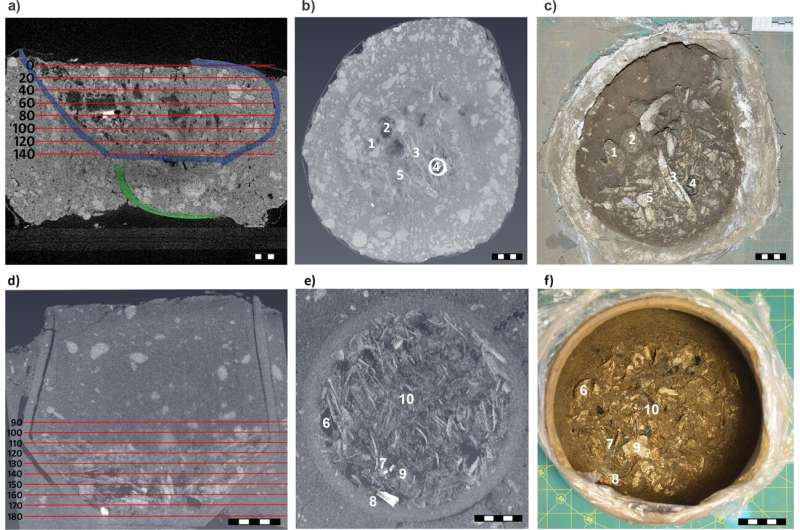August 31, 2023 report
This article has been reviewed according to Science X's editorial process and policies. Editors have highlighted the following attributes while ensuring the content's credibility:
fact-checked
peer-reviewed publication
trusted source
proofread
Multiple types of testing reveal details of Bronze Age cremation remains

A multidisciplinary team of researchers affiliated with several institutions in Austria, working with a colleague from Charles University in Prague and another from Vrije Universiteit Brussel, has found that it is possible to derive detailed information about people who were cremated thousands of years ago. In their study, reported on the open-access site PLOS ONE, the group used a variety of techniques to analyze the remains of two Bronze Age people in an urn.
Prior research has shown that there were two main types of burials for people who died during the Bronze Age: inhumation and cremation. In the former, a hole was generally dug for one or more individuals and their bodies placed into it, after which it was covered by dirt, rock or other material. In cremations, bodies were burned, typically by placing them on a pyre. Afterward, the remains were usually placed in an urn which was stored or buried. In either case, it was quite common for other material to be buried or burned along with the person who had died.
Archaeologists have generally found it a relatively easy task to learn about inhumations due to the abundance of bone material. Learning more about those who were cremated has been more challenging. In this new effort, the researchers took a new approach and found that much more can be learned from these remains.
The team studied two Bronze Age urns unearthed in Austria in 2021. Both were presumed to contain the remains of a single individual, and neither had been disturbed. To learn more about the people whose remains were contained in the urns, the researchers used several tools and techniques.
The first method involved taking CT scans of the urns—this allowed for discerning the contents and position of all the material in the urns without disturbing them. The team then applied traditional anthropology, zooarchaeology, archaeobotanical, isotopic and geochemistry testing regimens.

They found that both urns contained bone remnants, which showed that each urn held the remains of one person, as expected. Both individuals were female—one was 9 to 15 years old, the other was in her early 20s. Both had lived most if not all of their lives in what is now St. Pölten.
Both had also been cremated on a pyre along with meat from other animals and both had been wearing bronze jewelry. They also found that the younger girl suffered from vitamin deficiency, suggesting she had been ill before she died. There was also evidence of plant material in both urns, likely used as a fire accelerant.
The team's approach could be used on the remains of other cremated individuals from the Bronze Age or other periods to learn more about them.
More information: Lukas Waltenberger et al, More than urns: A multi-method pipeline for analyzing cremation burials, PLOS ONE (2023). DOI: 10.1371/journal.pone.0289140
Journal information: PLoS ONE
© 2023 Science X Network




















